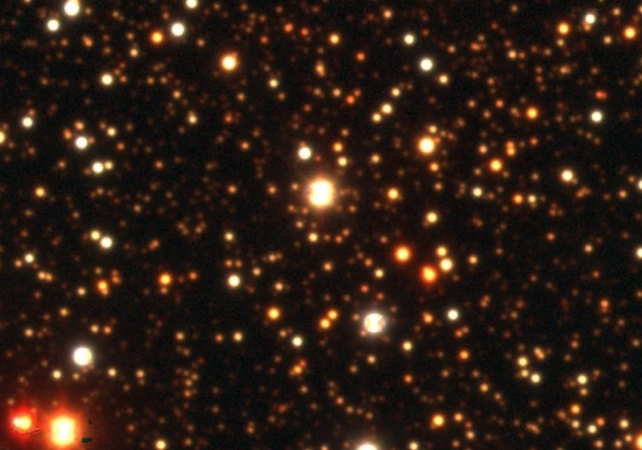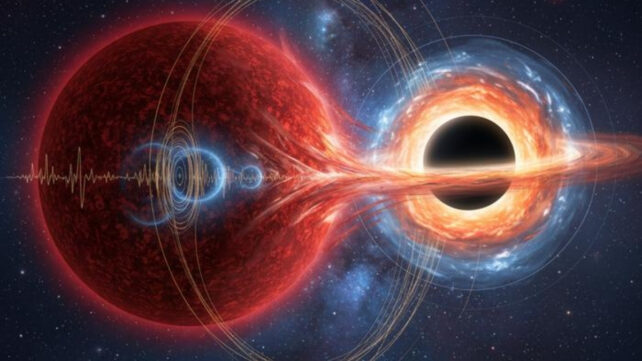Studying the light from stars tells us their temperature, composition, age, and evolutionary state.
But the red giant companion to Gaia BH2, a black hole system discovered in 2023, tells a contradictory story that doesn't make sense until you consider stellar violence!
The star is packed with heavy elements called alpha elements, chemical signatures typically found in ancient stars formed when the Universe was young. Based on this chemistry alone, it should be around ten billion years old.
Related: Strange 'Metal-Free' Galaxy May Hide The Universe's First Stars
Yet when astronomers from the University of Hawaii measured vibrations rippling through its interior using NASA's TESS satellite, they discovered the star is only about five billion years old.
"Young, alpha-rich stars are quite rare and puzzling. The combination of youth and ancient chemistry suggests this star didn't evolve in isolation," says Daniel Hey, lead author of the study published in The Astrophysical Journal.

The technique, called asteroseismology, works like seismology on Earth.
Just as earthquake waves reveal our planet's internal structure, starquakes, oscillations that make a star's brightness flicker subtly, reveal what's happening beneath the surface.
These vibrations allowed the team to measure the star's core properties with remarkable precision.
The star's rotation adds another clue; ground-based telescopes show it spins once every 398 days, which is far faster than an isolated red giant of its age should rotate.
Stars slow down as they age, losing angular momentum. The study showed that something spun this star up.
The most likely explanation is that this star either merged with another star or absorbed massive amounts of material when the black hole formed from its previous companion.
Either event would inject both extra mass, which explains the unusual chemistry, and increased angular momentum.
Gaia BH2 is what astronomers call a dormant black hole system. The black hole isn't actively feeding on its companion, so it emits no X-rays.
These systems were only discovered recently through precise measurements of stellar motion by the European Space Agency's Gaia mission.
Related: Gaia's Farewell Gift Is The Best Milky Way Map We've Ever Seen
The companion star wobbles slightly as it orbits the invisible black hole, betraying the presence of the massive object.

The team also examined Gaia BH3, another dormant black hole with an even stranger companion. Theory predicted clear oscillations, but none were detected, suggesting current models of extremely metal-poor stars need revision.
Future TESS observations will provide longer datasets, potentially confirming the merger hypothesis and revealing whether other dormant black hole companions harbour similarly violent pasts.
These quiet systems, hiding throughout the galaxy, may preserve evidence of stellar collisions that more active black holes would have long since erased.
This article was originally published by Universe Today. Read the original article.

